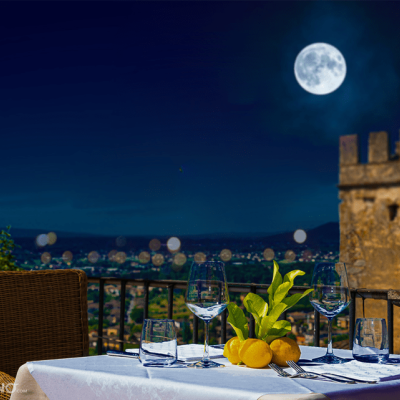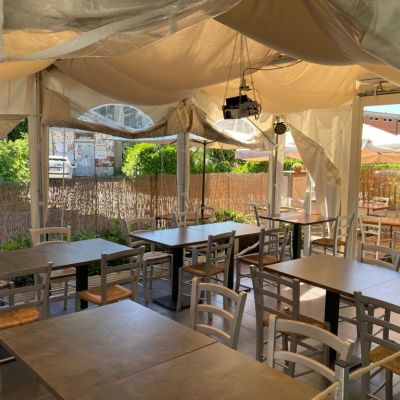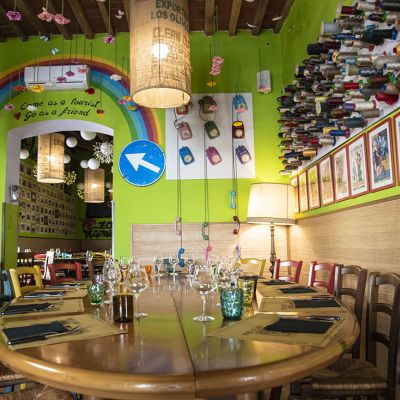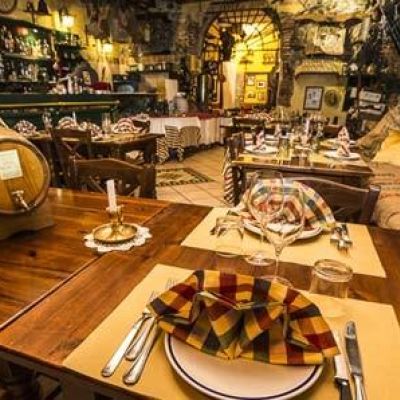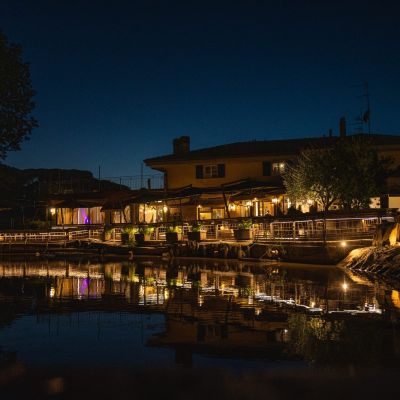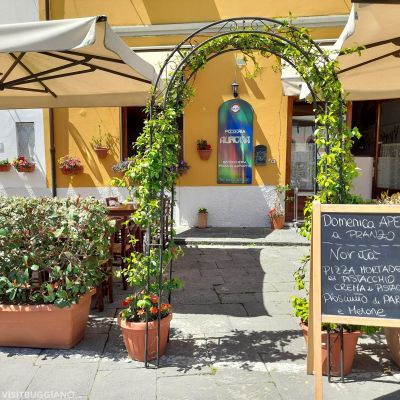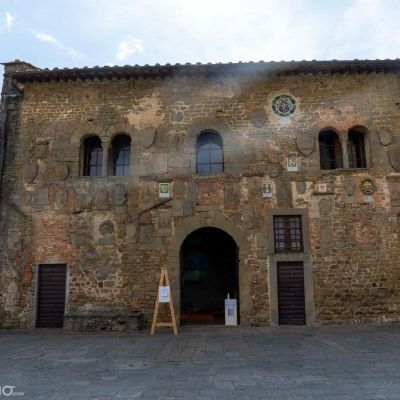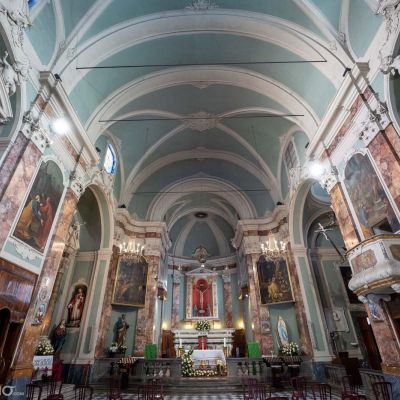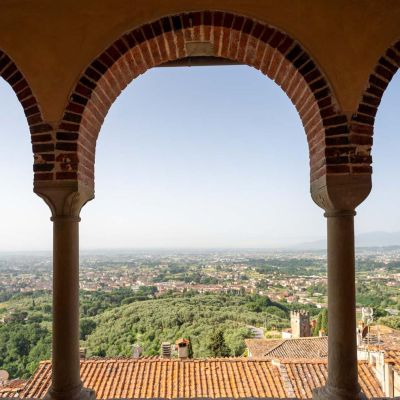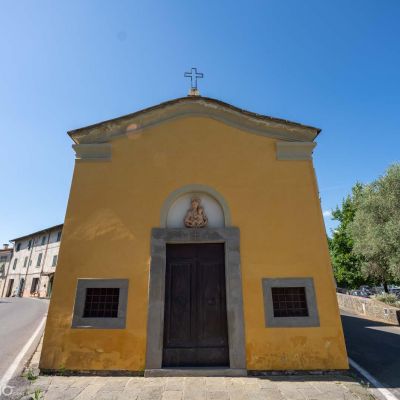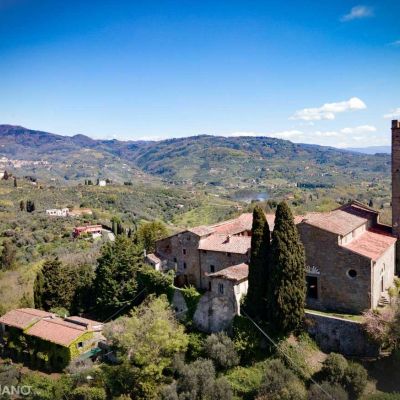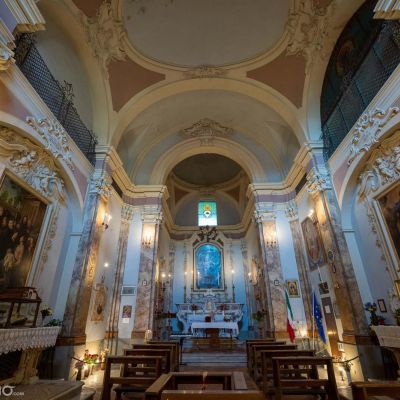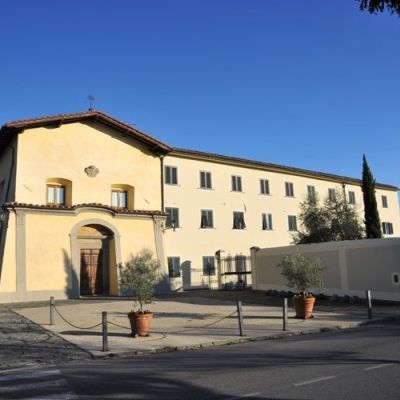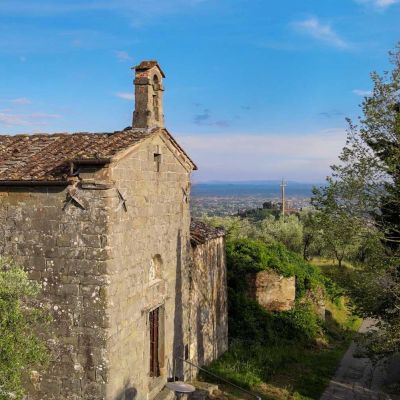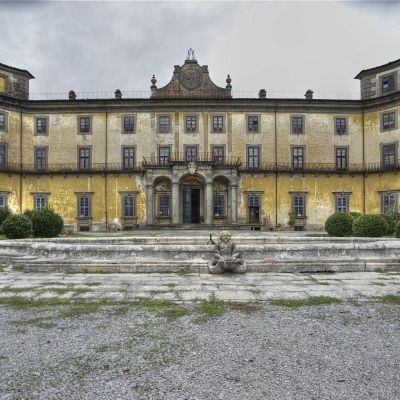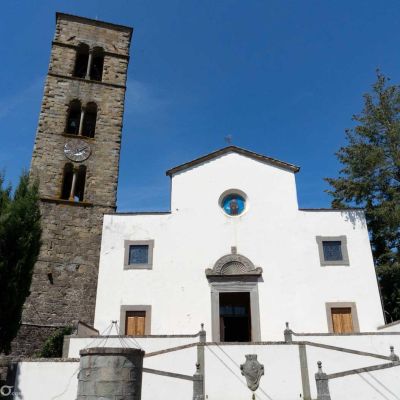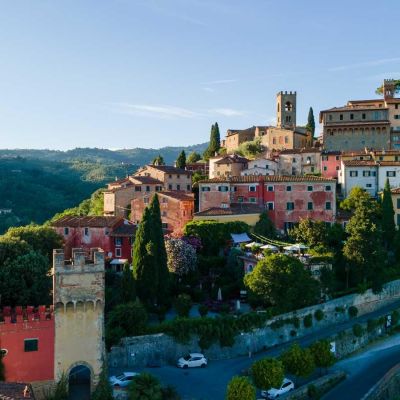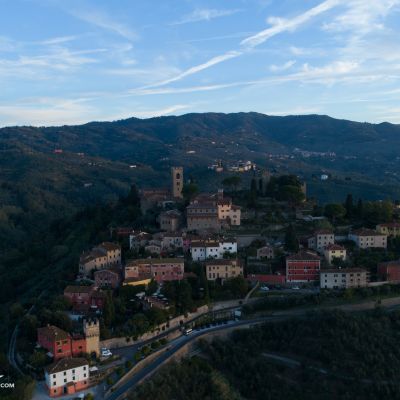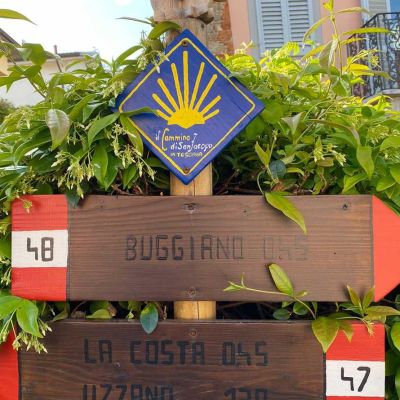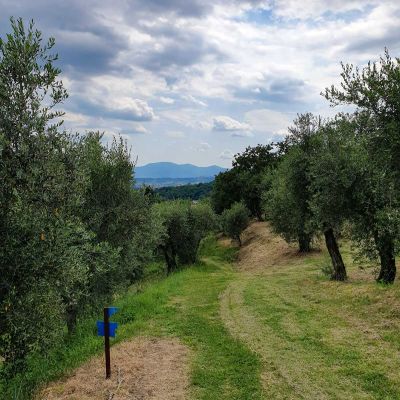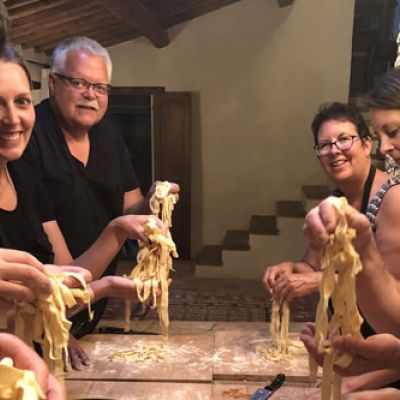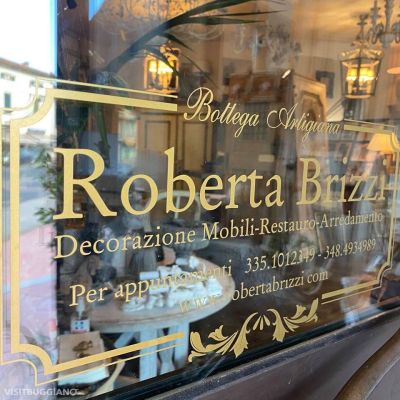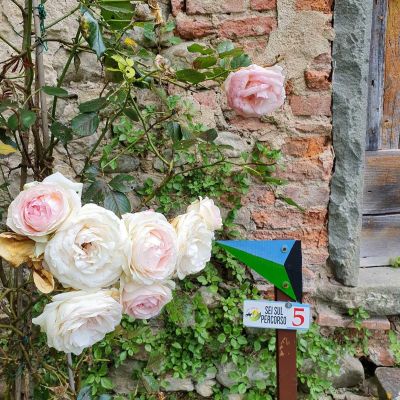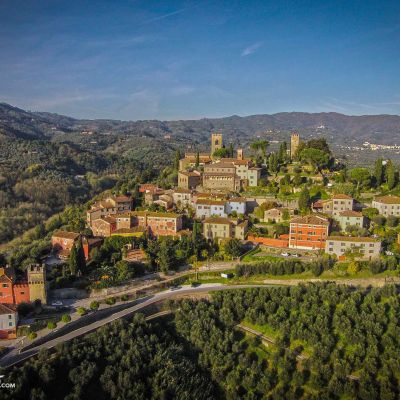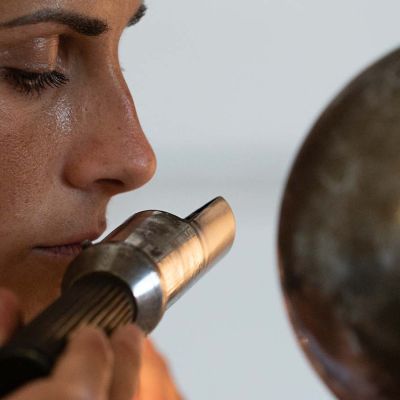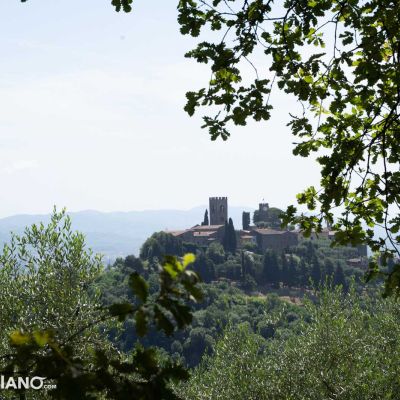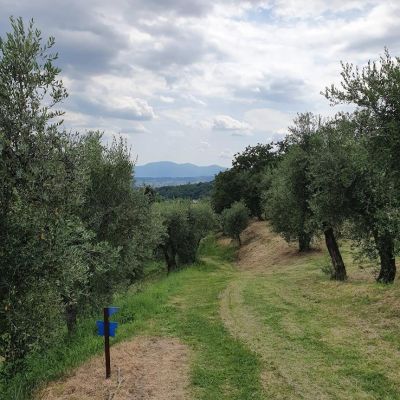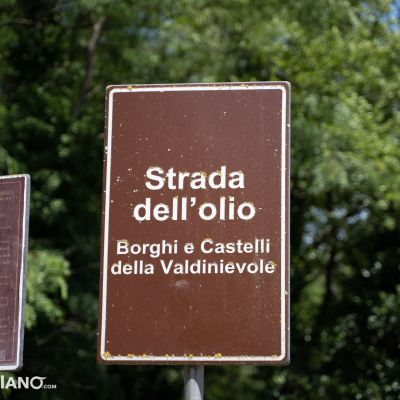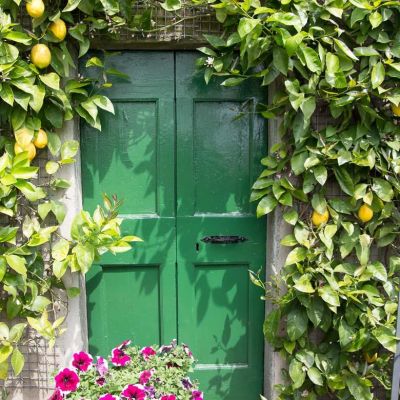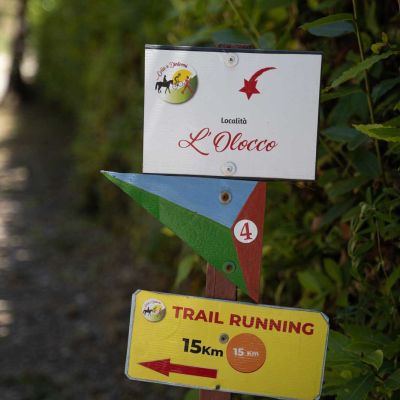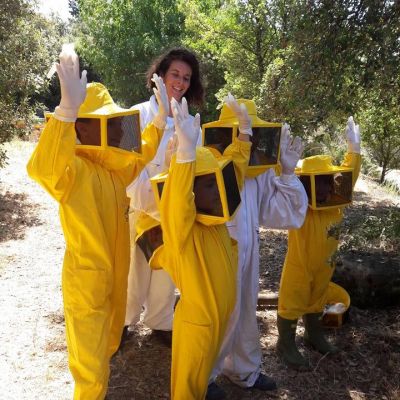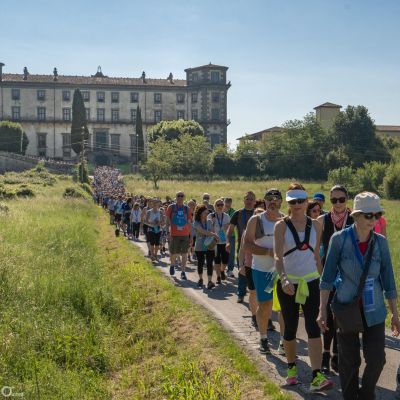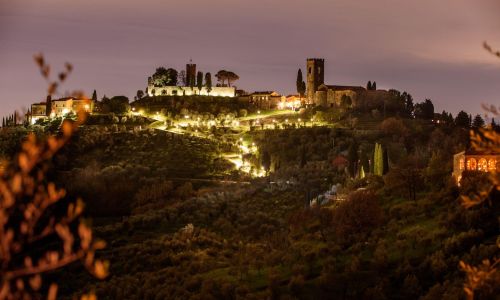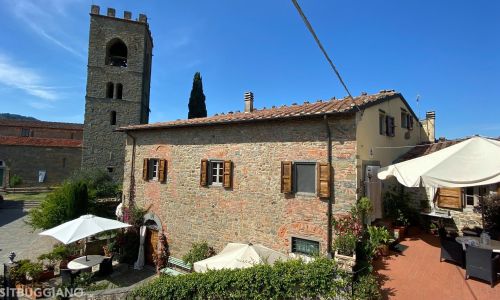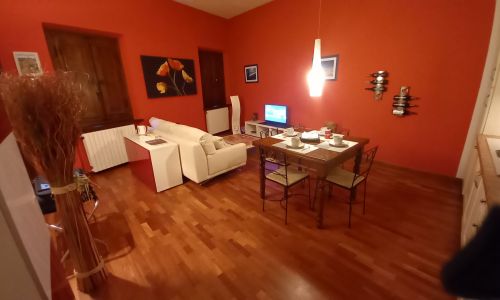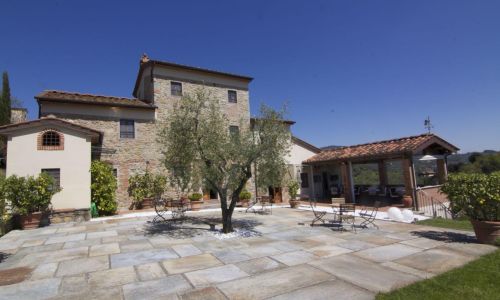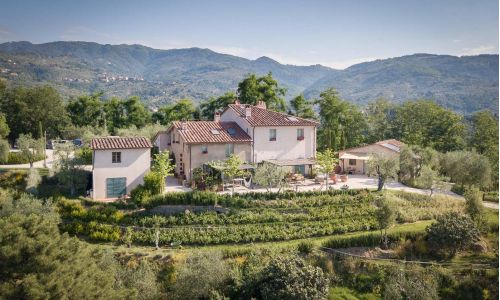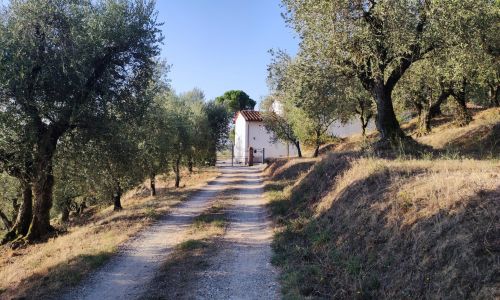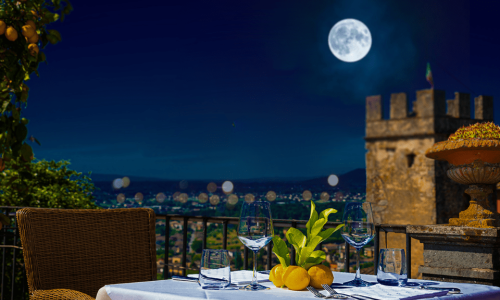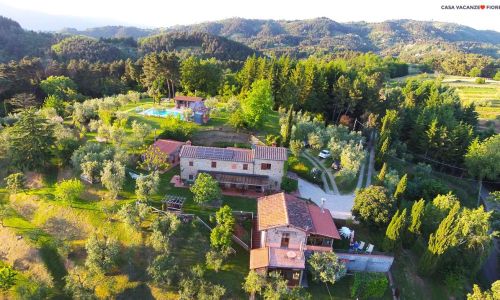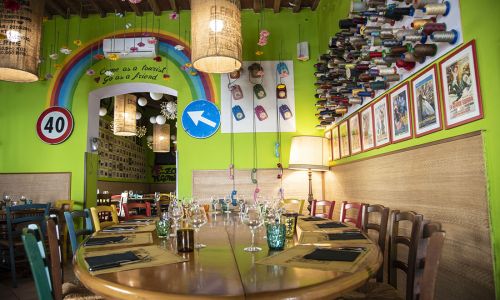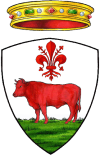The Bell Tower of Buggiano Castle
The bell tower of Buggiano rises majestically on the right wall of the perimeter wall of the Church of Our Lady of Health and Nicolao and rests directly on the rock. Built in the 13th century, perhaps in conjunction with the addition of the left aisle to the church, this bell tower stands out for its simplicity in perfect medieval style;
Austerity is the main feature, which lacks unnecessary decorations. Up to the second order, it presents a daring and genuinely primitive architecture. Its squat and schematic shape stands with severity, but at the same time, it conveys a feeling of lightening proportionate to the height.
The double windows crowned by the bell tower, illuminated by pointed arches, contribute to the charming and unique appearance of the bell tower. It is believed that this bell tower was inspired by the extraordinary bell tower of Vignole in Pistoiese, an example of Sicilian architecture imported into Tuscany. In addition, the decorative frame that adorns the windows at the height of the shutters is an element that recalls the architectural environment of Pisa-Lucca.
In the upper part of the bell tower, especially on the north and west sides, are evident recent renovations carried out in 1925 to repair the damage caused by lightning. During the restoration work, the bell tower was equipped with a crenellated frame, similar to that of the clock and the monastery.
This bell tower, one of the first to arise in the region, houses four bells, including the oldest dating back to 1710. The major bells, considered among the largest and most harmonious of Valdinievole, have a rich history. The second bell, dedicated to Saints Sylvester and Dorothea, bears the date 1770. The third and fourth bells, dedicated to Saint John the Baptist and Saint Lucy, bear the dates of 1814 and 1966 respectively. In 1966, these bells were electrified.
The Buggiano bell tower is a symbol of history and culture, and its austere and authentic architecture continues to capture the imagination of anyone who looks at it.
The bell tower of Buggiano
Located on the left side of the Church of San Lorenzo a Colle di Buggiano, the bell tower is an imposing and slender structure. In Romanesque style, it presents details that tell a story of evolution over the centuries.
Originally the structure was probably obtained from a watchtower and to support this thesis there are loopholes scattered along the walls.
Three orders of mullioned windows, divided by columns, give grace to the whole, helping to make it an extraordinary example of Romanesque architecture.
The Steeple of Stignano
The base of the bell tower of Stignano with its structure older than the Church, suggested to historians that originally there was a watchtower, later adapted to contain the bell cell.
It is obvious, at first glance, that the bell tower and the church were not built simultaneously. The southern wall of the bell tower leans against the church wall, and this is evidenced by small arches inside the church itself, built to support the wall thicker than the bell tower. At the same time, inside the bell tower, you can clearly see the continuation of the church wall, with a pretty artistic cornice supported by capitals.
The upper part of the bell tower reveals clear traces of renovation and subsequent modifications, which are clearly distinguished from the lower part both by the material used and the construction technique employed. No documentation exists to explain the reasons for these visible changes. They may have been made to repair the damage suffered by the bell tower during the destruction that occurred in Stignano in 1336, 1430 and later in August of 1496.
The last works may have been performed with the aim of raising the bells, so that their sound could be heard even by those who were far away, serving as a guide and signal.
According to an inscription engraved on a stone at the base of the north side, the vault of the bell tower itself was built in the mid-sixteenth century. Despite having been eroded by time and weather for more than four centuries, the following words are still visible: “GHORO BRANDI O.P.I.O. MADE CAPALE MDXXXXI VAULT.”
The library of Buggiano is full of texts on local history, art and architecture, for those who want to deepen these issues.





